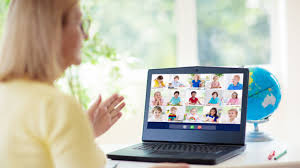
Remote teaching has become a cornerstone of education, allowing learning to continue uninterrupted irrespective of the physical location. However, executing an efficient remote classroom teaching plan requires careful consideration and adaptation. Here are five tips to help educators enhance their online teaching strategies:
1. Structure Your Lessons with Clear Goals: Each online lesson should have clear objectives that are communicated to students at the beginning. This provides a roadmap for what they will learn and keeps them engaged. Use SMART goals (Specific, Measurable, Achievable, Relevant, Time-bound) to frame each lesson.
2. Incorporate Interactive Elements: The virtual environment can make it challenging to retain student attention. Incorporate elements like quizzes, breakout sessions, and interactive discussions to promote participation. Tools such as Kahoot! or Google Classroom can be leveraged for this purpose.
3. Utilize Effective Time Management: Time management is crucial in a remote classroom where it is easy for students to be distracted. Break the content into smaller, digestible segments interspersed with activities or discussions. Also, consider asynchronous tasks that allow students to work at their own pace.
4. Leverage a Variety of Multimedia Resources: The use of videos, podcasts, infographics, and other multimedia can cater to different learning styles and break the monotony of text-based learning. These resources can also be revisited by students for revision purposes.
5. Regular Feedback and Assessment: Continuous feedback helps students understand their progress and areas that need improvement. Provide regular assessments and constructive feedback promptly to keep the momentum going and assure that learning objectives are being met.
Implementing these tactics will not only keep remote learning effective but will also maintain student engagement and facilitate continuous improvement in your educational methodologies in the digital landscape.
